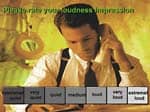
A lot of attention, including dozens of articles in this magazine, has centered on how verification—through either real-ear measurement (REM) or live speech mapping—is a necessary component in the modern hearing aid fitting protocol. We tend to mention “verification and validation” (V & V) in one breath, as if these clinical tools are the same thing. And, although they are definitely related in that they measure the functionality of hearing aids and individual patient benefit, I think validation sometimes gets short shrift.
Why? It may be as as simple as our field’s historic never-ending quest for “hitting the target”—whatever “target” might be defined as being (NAL, DSL, etc)—dating back to Sam Lybarger’s Half-Gain Rule. The simple fact is that, for a seasoned professional, a validation questionnaire isn’t nearly as high-tech and impressive as hooking up the hearing aids to specialized equipment and scientifically verifying that the actual gain is matching the prescribed fitting targets.
However, validation—outcome measures designed to assess hearing aid benefit—has also been shown to be a vital part of hearing aid best practice guidelines, and is arguably even more important than verification. For example, MarkeTrak VIII (June 2011 HR) shows that verification and validation decreases the number of patient visits per hearing aid fitting. Those practices that used both verification and validation had an average of 2.41 patient visits; those that used neither had an average of 3.57 patient visits. Given these statistics, the study “suggested that the systematic utilization of both verification and validation procedures while fitting hearing aids will reduce patient visits by a total of 521,779 visits” in 2010. For a field that is searching for ways to expand its footprint with our relatively small number of available professionals and dispensing offices in contrast to a burgeoning aging population, V&V appears to be an imperative. However, it was interesting that, in this same study, practices using only validation (and not REM) had an average of 2.55 patient visits versus those using only verification (and not validation), which had an average of 2.82 patient visits, suggesting that validation was most important.
In the past 30 years, many excellent validation measures have been introduced that range from the Abbreviated Profile of Hearing Aid Benefit (APHAB), Client Oriented Scale of Improvement (COSI), and the Glasgow Hearing Aid Benefit Profile (GHABP) on the subjective side, to the Speech in Noise (SIN), QuickSIN, Hearing in Noise Test (HINT), and Connected Speech Test (CST) on the objective side—to name only a few. While both subjective and objective validation testing is obviously vital to patient outcomes, those over-arching tests of subjective benefit may be the most easy to systematize and therefore improve customer satisfaction on a practice-by-practice level.
In this month’s Blog Page, Brian Taylor, AuD, says that the industry has been missing the boat in that only 36% of dispensing professionals routinely measure patient outcomes using questionnaires. Dr Taylor hints that the future might entail office management systems (OMS) incorporating these into their programs. In his May 2012 Final Word column, Dennis Van Vliet, AuD, also hints at the need to systematize validation measures. Dr Van Vliet states, “There are good outcome measures available to suit our needs, but the critical issue is likely to be the lack of time needed to select and administer appropriate survey instruments, and analyze the responses. A third party system that would handle the administration as well as initial analysis would be the best solution.” In this light, incorporating solutions like EARTrak or a similar automated service might be a good option.
In one of his presentations, MarkeTrak author Sergei Kochkin, PhD, lamented that he can get a $30 oil change and be presented with a two-page customer satisfaction questionnaire, but most people who are purchasing a $2,000 hearing aid are not asked what they think about their devices or the service they receive. Having systematic validation is a goal that our industry could achieve in a relatively short period of time that would further set us apart from the online rabble, while proving to consumers, regulators, and third-party payors that quality, professionally dispensed hearing aids and assistive devices are the answer for hearing loss.
Karl Strom
Editor-in-Chief





